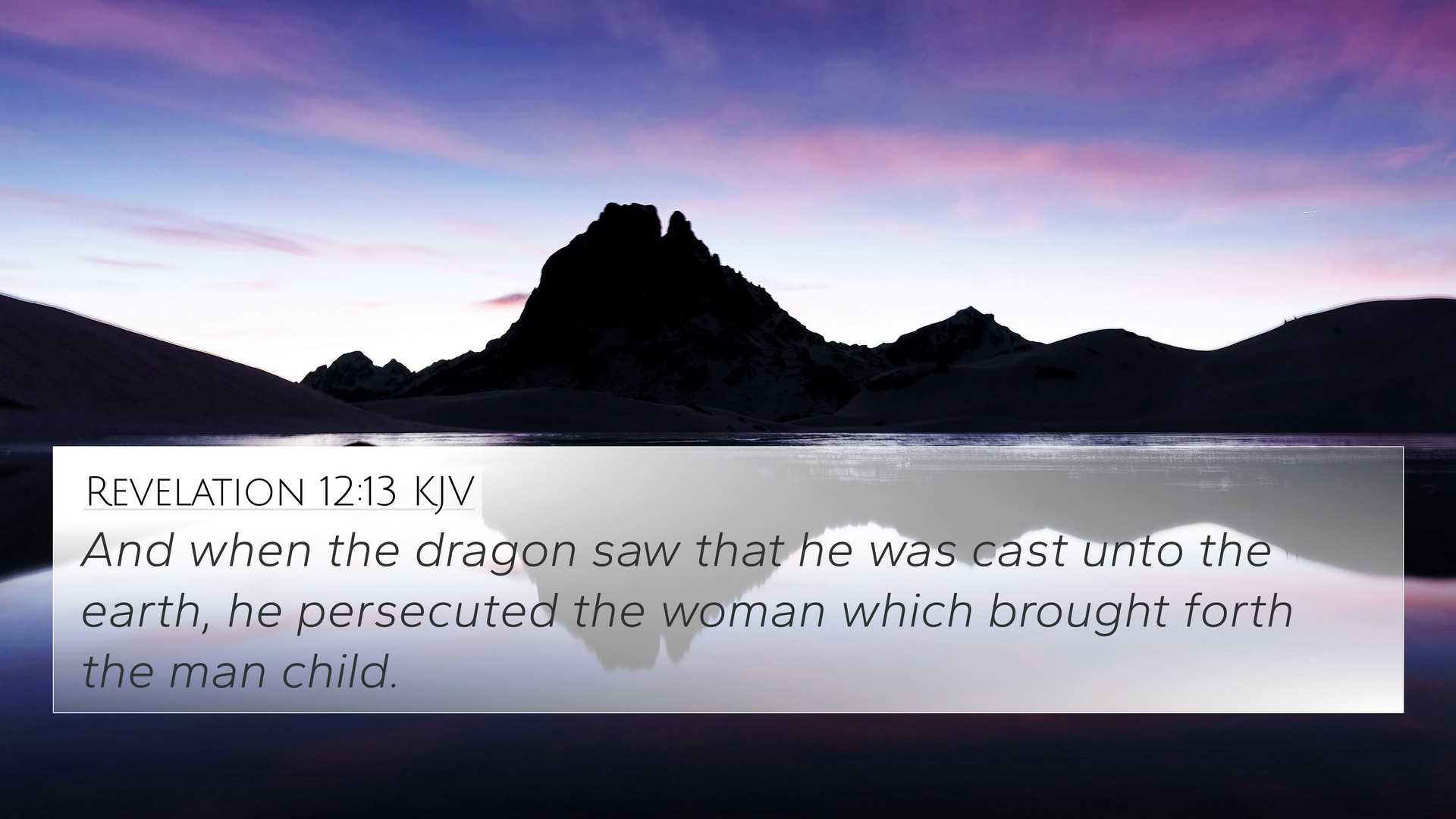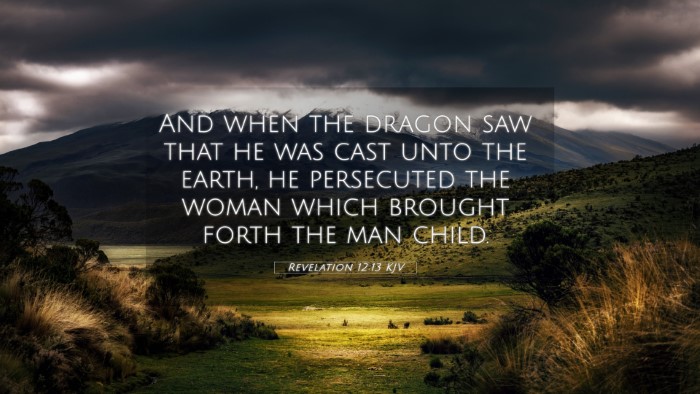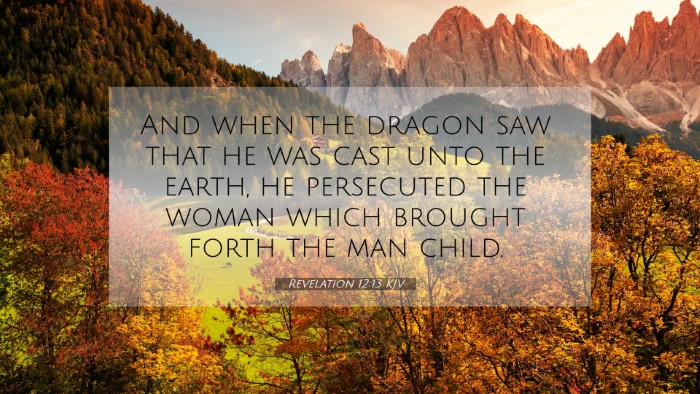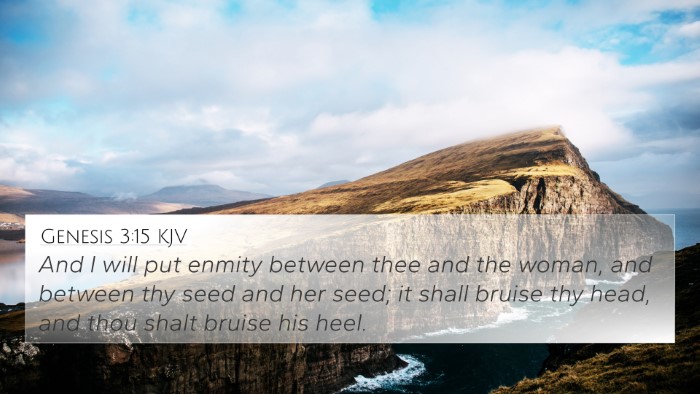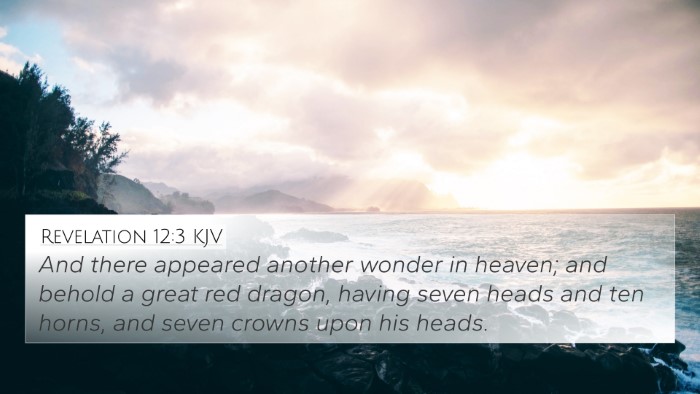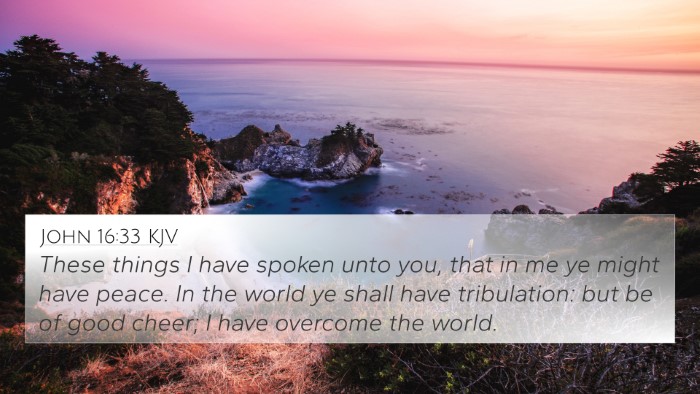Understanding Revelation 12:13
Revelation 12:13 states: “And when the dragon saw that he was cast unto the earth, he persecuted the woman which brought forth the man child.” This verse carries profound theological significance and is rich with symbolism, which can be unpacked through comparative analysis and cross-referencing with other scripture passages.
Summary of the Verse Meaning
In this passage, the "dragon" symbolizes Satan or the adversary, while "the woman" represents the nation of Israel or, more broadly, God's people. The "man child" refers to Jesus Christ, born from Israel and destined to rule. This verse portrays a cosmic conflict wherein, upon his defeat, Satan seeks to inflict suffering on God's people, a theme prevalent throughout the Bible.
Commentaries Insights
-
Matthew Henry:
Henry emphasizes the tumultuous nature of spiritual warfare. He notes that Satan’s wrath is a response to his defeat, illustrating the tension between good and evil. The woman's persecution signifies the ongoing struggle for believers throughout history, drawing parallels with the trials of the faithful in various contexts.
-
Albert Barnes:
Barnes delves into the significance of the "dragon" as representing the Roman Empire and its oppressive force against the early Christians. He points out that Revelation often uses figurative language to convey deeper truths about the nature of evil and the perseverance required by the saints.
-
Adam Clarke:
Clarke provides a historical perspective, analyzing the Jewish understanding of messianic prophecies and how this verse fits into the larger narrative of Revelation. He brings attention to the woman’s triumph and the eventual vindication of the children of God, suggesting a future hope amidst current struggles.
Bible Cross References
For a comprehensive understanding of Revelation 12:13, consider the following related Bible verses:
- Genesis 3:15: The protoevangelium, where God foretells the enmity between the serpent and the woman, foreshadowing this cosmic struggle.
- Isaiah 66:7-8: A prophetic insight into the birth of a nation and its trials, correlating with the imagery in Revelation.
- Matthew 2:13-15: The flight to Egypt after Herod’s decree mirrors the persecution of the woman in Revelation.
- John 16:33: Jesus’ reassurance to His followers about overcoming the world speaks to the early Christians’ experiences as depicted in Revelation.
- 1 Peter 5:8: A warning about the adversary’s seeking to devour, correlating with the dragon’s persecution.
- Revelation 12:6: An earlier verse in the chapter that highlights the woman's flight into the wilderness, showing the ongoing nature of her trials.
- Revelation 20:2: The ultimate binding of the dragon points to the eventual victory of God's people over evil.
Thematic Connections
This verse connects thematically with other aspects of Scripture, illuminating the ongoing battle between good and evil:
-
The Role of the Messiah:
Revelation 12:13 emphasizes the significance of Christ's birth and Satan’s opposed reaction, echoing themes found in the Gospels regarding His mission and conflict with evil.
-
Persecution of Believers:
Throughout the Bible, the plight of the faithful amidst trials is a recurring theme, seen in various passages such as Psalm 44 and 2 Timothy 3:12, where the righteous face opposition.
-
The Sovereignty of God:
This passage reaffirms God’s control over history, linking back to passages like Isaiah 14:24 and Romans 8:31, where the assurance of God’s victory over adversaries is made clear.
Tools for Bible Cross-Referencing
Engaging in cross-referencing can deepen understanding of biblical texts. Various resources can aid in this process:
- Bible Concordance: A tool to find specific words and their occurrences across scriptures.
- Bible Cross-Reference Guide: These guides show connections between verses, highlighting thematic continuity.
- Cross-Reference Bible Study: Utilizing study Bibles that provide footnotes for related verses enhances understanding.
- Comprehensive Bible Cross-Reference Materials: Recommended for those conducting in-depth studies or preparing sermons.
Conclusion
Revelation 12:13 serves as a pivotal verse within the biblical narrative, encapsulating the struggle between good and evil. Through cross-referencing with other scriptures and insights from public domain commentaries, a clearer understanding emerges regarding the significance of this cosmic conflict and its implications for believers. This deeper exploration encourages the faithful to engage with the broader narrative of Scripture, linking various themes and understanding their role in the unfolding story of redemption.
